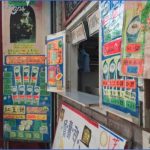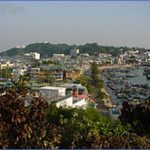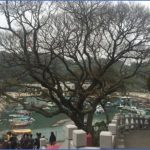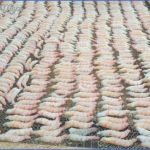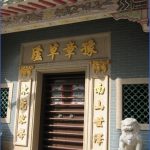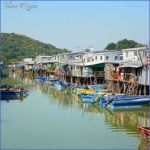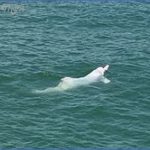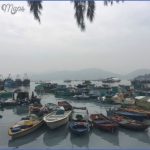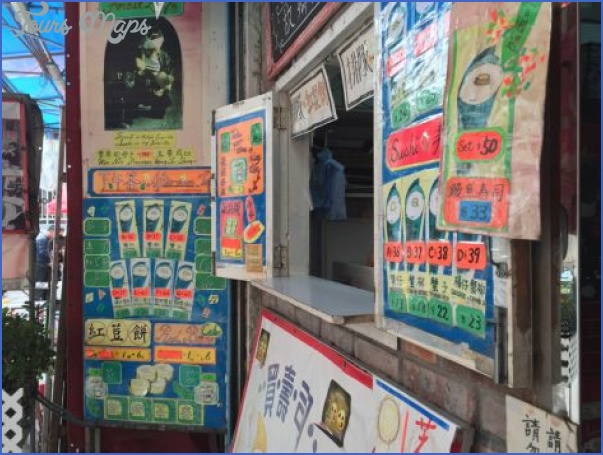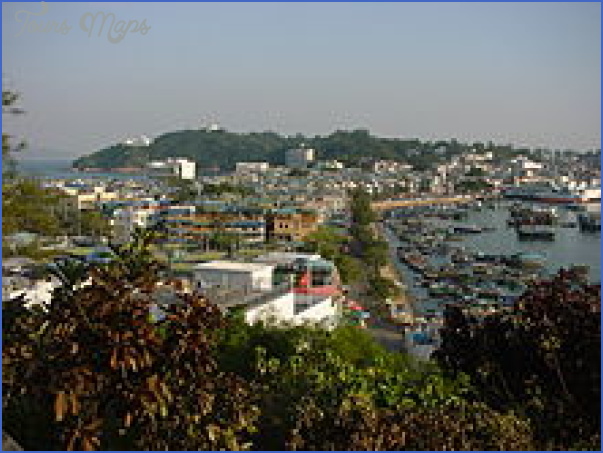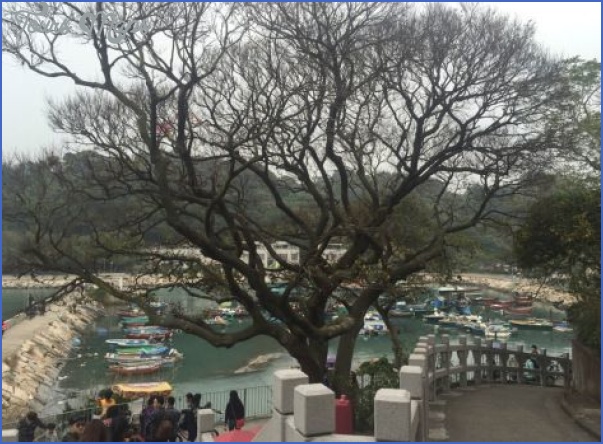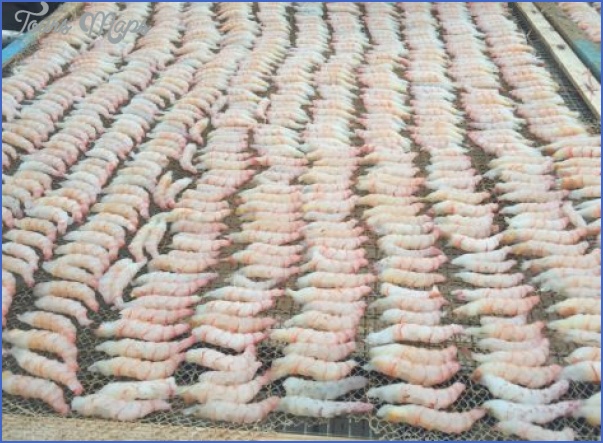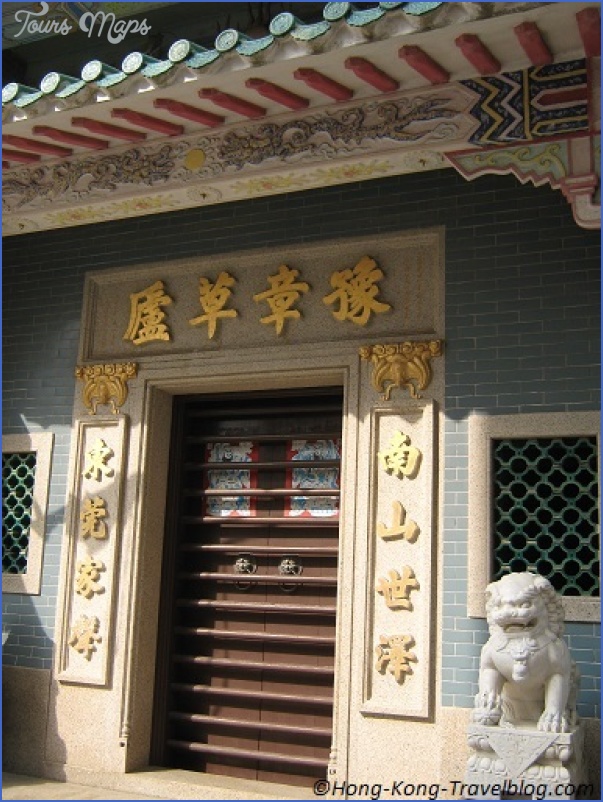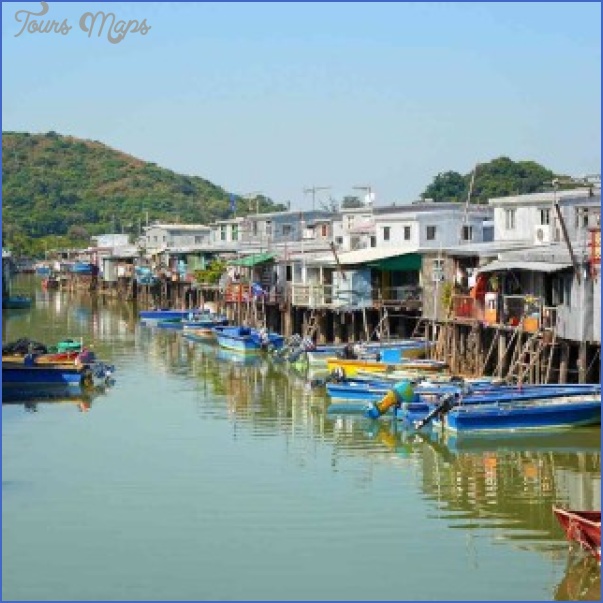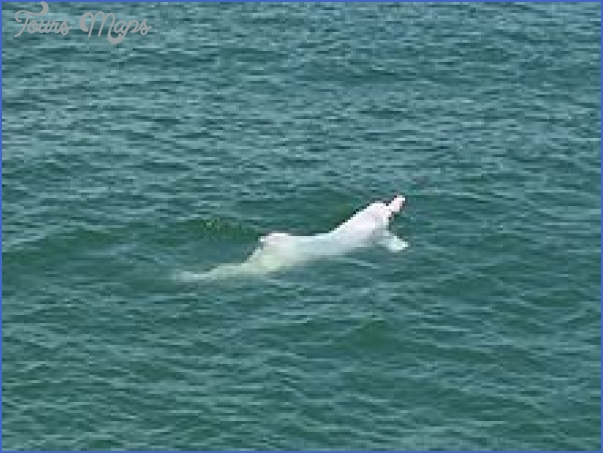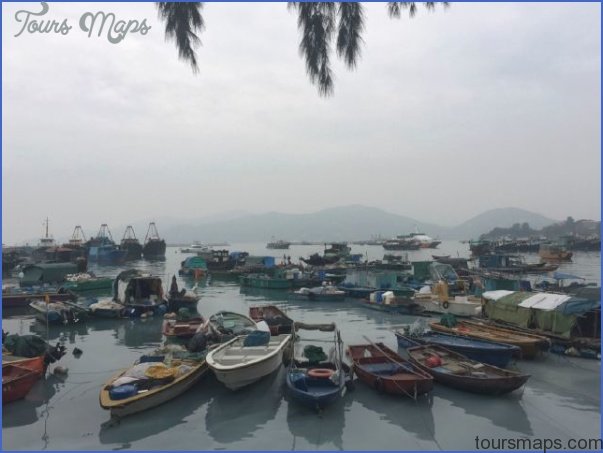The islands to the west of Kowloon and Hong Kong can be reached by regular ferry connections. The boats berth on Hong Kong Island at the “Outlying Islands” quay on Connaught Road. There are also circular boat trips available to the islands.
Lantau is by far the largest island in the colony (about double the size of Hong Kong Island), but only about 30,000 people live there. The largest settlement, Tai 0 (pop. 12,000, mainly fishermen; crab paste), with houses built on stilts above the river, lies at the western end.
In the centre west of the island, at an altitude of 800m/2600ft, is the monastery of the “precious lotus” or Po Lin, the building of which was begun in 1921. The massive Buddha figure has a height of 35m/115ft and it measures 52m/171ft in diameter. It is possible to spend the night in the monastery (Spartan sleeping-places and vegetarian food). In the early morning hours one can be taken up to Lantau Peak (933m/3061ft) by a monk. It is the highest point on the island and the sunrise is superb. To the south ofthe monastery lie the tea plantations of the Ngong Ping Plateau, the only ones in the colony (overnight accommodation available in small bungalows).
It is well worth a walk around the Shek Pik reservoir which lies amid picturesque scenery to the south-west of Lantau Peak. Underwater pipelines take water stored here to islands of Cheung Chau and Hong Kong.
In the centre north of the island of Lantau stands Fort Tung Chung, which was built by the Chinese in 1817 as a defence against the invading Europeans.
Another attraction on Lantau Island is the Trappist monastery of the Catholic Cistercian order, known as Tai Shui Hong (“Trappist Haven”), situated in the north-east ofthe island. It was founded in 1956 by monks who had fled from the Chinese dictators in Beijing and who now run a highly lucrative dairy farm. It is also possible to spend the night here.
Chek Lap Kok, an island lying off the north shore of Lantau Island, is the location of Hong Kong’s new airport, due to be completed in 1997, which should relieve the pressure on the severely overstretched Kai Tak Airport (south-east of Kowloon). The rocky surface of the island has been both flattened (90 million cu.m/3180 million cu.ft of rock will have been blasted away) and raised (75 million cu.m/2650 million cu.ft of sand and gravel), so thatthe overall area ofthe island has been increased by about 13sq.km/5sq. miles. The massive site, complete with motorway and rail connections and a satellite settlement, must rank as one ofthe largest construction projects in history.
The two small islands of Cheung Chau and Peng Chau, which lie off the east coast of Lantau Island to the south and north respectively, are densely populated (mainly fisher people) but have no motorised transport. These typically Chinese islands throng with visitors at weekends.
The islands of Lantau, Chek Lap Kok, Cheung Chau and Peng Chau Photo Gallery
Maybe You Like Them Too
- The Best Cities To Visit in The World
- World’s 10 Best Places To Visit
- Coolest Countries in the World to Visit
- Travel to Santorini, Greece
- Map of Barbados – Holiday in Barbados

